Peter Dornauf – 19 June, 2015
From the geometry of window frames and the angular lines of exposed rafters, we move to the bulbous rounded forms of naked bodies captured in extreme close-up. The contrast highlights not only the disparity between the shapes but also the distinction between presence and absence. The careful exploration of shoulder, thigh, buttocks and pubic area are played off against the rounded construction of iron railings still extant on the property.
Hamilton
Joanna Margaret Paul and Ziggy Lever
Thinking Feeling
Curated by Paula Booker
28 May - 19 June.
Time and place are the world’s universal coordinates and the intersection of such collective lines provides a kind of GPS for our lives. Where you are and at what time is the stuff that historically constructs us, laying down levels of emotional strata, the layers of bedrock on which our existence is precariously built and balanced.
Artists Joanna Margaret Paul and Ziggy Lever have been brought together by curator Paula Booker at Ramp Gallery, Waikato Wintec, to explore such coordinates. They do so via the moving image - brief segments of video footage from their local environs. Paul’s work comes from the 1970s (she tragically died in 2003) and Lever’s more recently in 2014 and 2015. Called Thinking Feeling, the works engage with the quotidian elements that cumulatively contribute to that which becomes eventually recognized as extraordinary in our lives.
Paul’s earliest work, Motorway (1971), plays for just over three minutes, a series of collaged clips and panned views of bridges associated with the new phenomenon in New Zealand at the time; the motorway. The seventies was a period of new public works that saw major highways and bridges being built in the early part of the decade. Paul captures this spectacle, not from an historical, social or even geographical point of view but rather with an eye to formalist qualities.
It has been said (by Peter Ireland) that Paul grew up inside a tradition that was more “Bloomsbury than Bauhaus” but here the latter aesthetic predominates as she focuses in on the geometry involved in the construction of the bridge, making play with its abstract qualities, its squares, grids and triangulated repetitions. Her filmic treatment is to focus with close-up shots that make the pronouncement of shape and form both singular and dramatic. At times the camera hovers on a shape or silhouette, at other times it pans quickly across the surface. The whole sequence is bathed in a purple hue that provides a distanced effect to the forms presented so that the experience is mediated via a lens that disqualifies the subject from being its normal and recognizable self.
The familiar is thus made unfamiliar so that the formal elements, their interplay and juxtaposition, the dance of their clash and convergence, become emphasised. What foliage appears on film takes up only a short section of the work and acts simply as a counterpoint to the hard-edged lines of her central images.
Her second work, from 1975, called Body/House, lasts 7 minutes 25 seconds and is literally the embodiment of the title; a photomontage of a derelict house and two nude female bodies, in situ on a small lawn, bodies that become caressed in detail by the camera.
Again Paul is interested in the geometric bones of the house, the roof, the walls and an open doorway in the wall that frames the grounds of the place. It is the shell of a house, one that obviously was lived and loved in, no longer holding any inhabitants but rather holding poignant memory. Again her treatment is the close-up, lingering especially on an outside wall, on its cracks, its flaking plaster so that the concentration assumes symbolic proportion. There are, somewhat enigmatically, large numbers printed in black on the wall - 8, 9, 10. Time and its eternal work of recollection and ruin are here evoked.
From the geometry of window frames and the angular lines of exposed rafters, we move to the bulbous rounded forms of naked bodies captured in extreme close-up. The contrast highlights not only the disparity between the shapes but also the distinction between presence and absence. The careful exploration of shoulder, thigh, buttocks and pubic area are played off against the rounded construction of iron railings still extant on the property.
This is a fresh take on Manet’s Picnic on the Grass, but with a new subject; that of love and loss associated with place, of things passing connected with the passage of time, the bereavement of the two as they intersect in memory, a memorial to the human condition made affecting in the play of formal patterns that makes one not only think but feel.
Where Paul evokes the timeless in her pieces which last only a short period, Ziggy Lever embraces real time that moves durationally from moment to moment. His Birds eating figs in the neighbour’s yard (2015) lasts 2 minutes 24 seconds that sees the camera zoom into the leaves of a tree, sky with all else excluded, capturing birds feasting on fruit.
Visually such focus and attention educes something out of the work of Matisse, a luxurious, textural and sensual experience. But in the simple running of the film, uninterrupted, Lever has made an attempt to capture the Bergsonian concept of the continuous flow and flux of time as opposed to the notion of time made up of discrete units. The French philosopher Henri Bergson thought such an experience could only be grasped intuitively by paying attention in the right way, and Lever with his close-up of leaves and pecking birds concentrates the mind and visual field so that things do not appear as a succession of separate instants. In the viewing, reality becomes unified and continuous where the separation between knower and the known dissolves.
The notion of time as continuous process is approached from another perspective in the second work, Driving down the road looking for weeds, (2015). For 4 minutes 53 seconds, the film rolls as a journey unfolds, the camera angled out the car window so that in real time it tracks sky, street, power lines, trees and the road, attempting to mimic or match the continuous process of things perpetually coming into being and never static. Then the journey seems to be retraced as the car turns back, becoming the place where time and memory overlap, where subjective and objective play off each other, where past confronts the present, recollection and reality intersect. Lever presented three films in total, the third one being, The world is not flat. It is incredibly spiky (2014).
A publication accompanies the show, called Thinking Feeling. Forty pages long, it includes essays by Paula Booker and Ziggy Lever (the latter on Bergson’s ‘five operations of subjectivity’), together with a conversation between curators Laura Preston and Paula Booker on various Bergsonian issues, and problems associated with contemporary artists’ use of the projected moving image.
Peter Dornauf

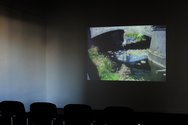
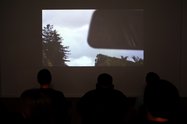
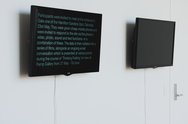
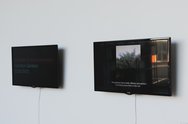
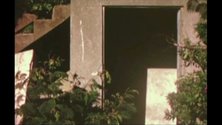
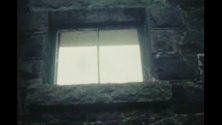

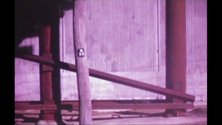

 Two Rooms presents a program of residencies and projects
Two Rooms presents a program of residencies and projects Advertising in this column
Advertising in this column



This Discussion has 0 comments.
Comment
Participate
Register to Participate.
Sign in
Sign in to an existing account.